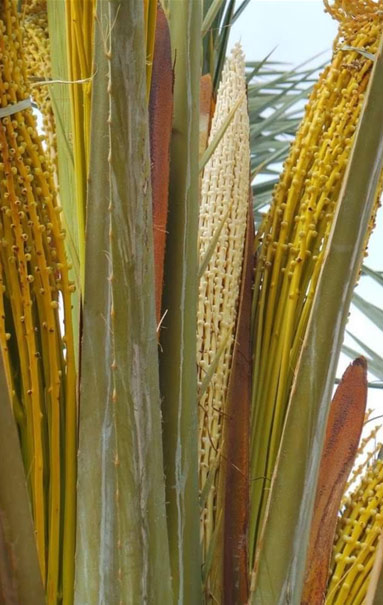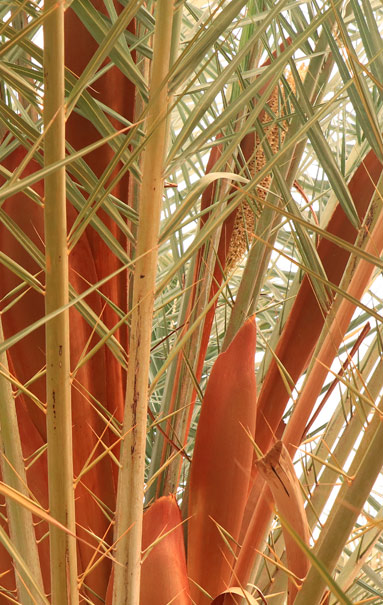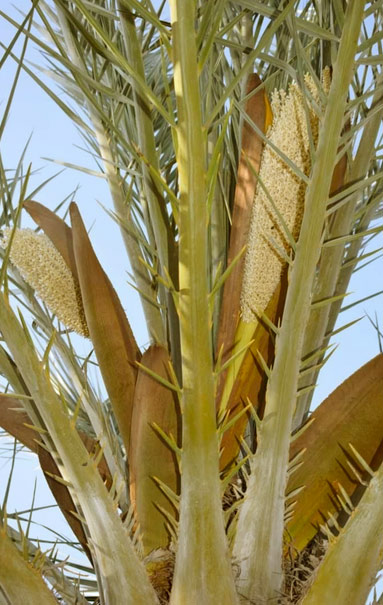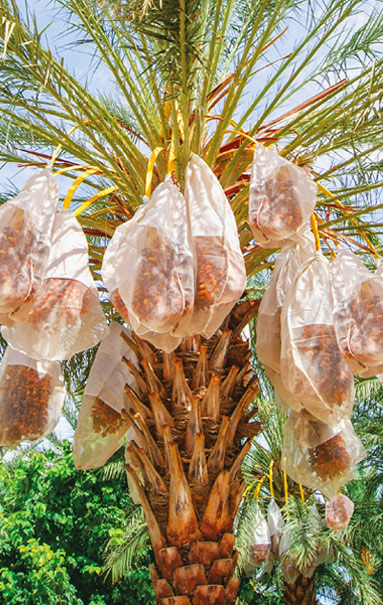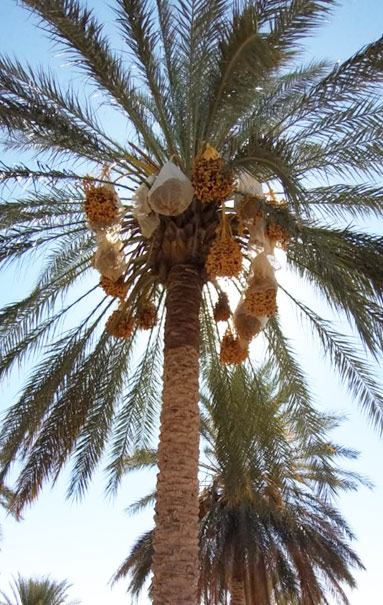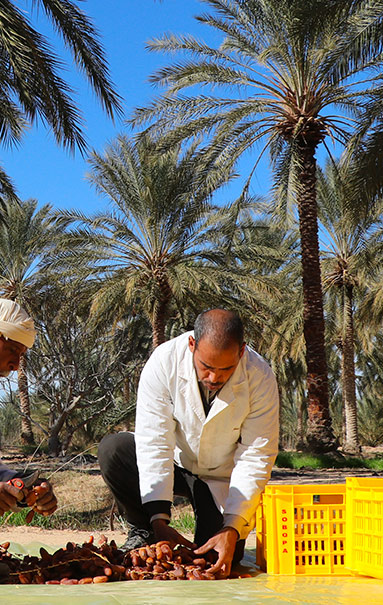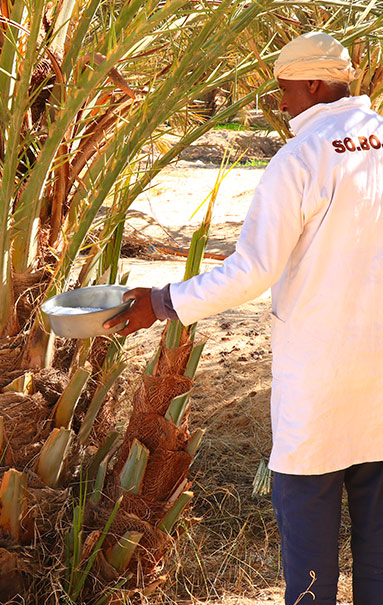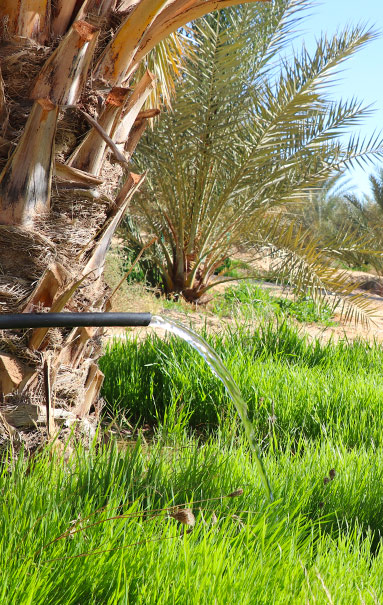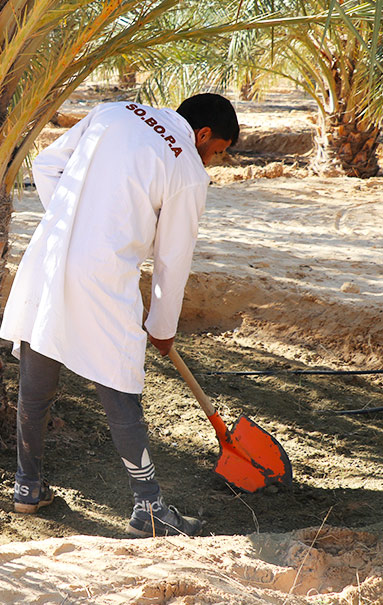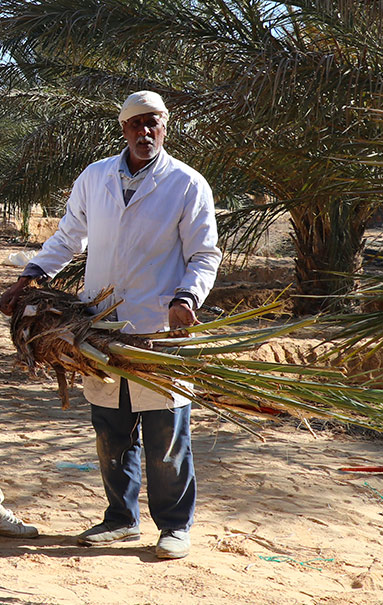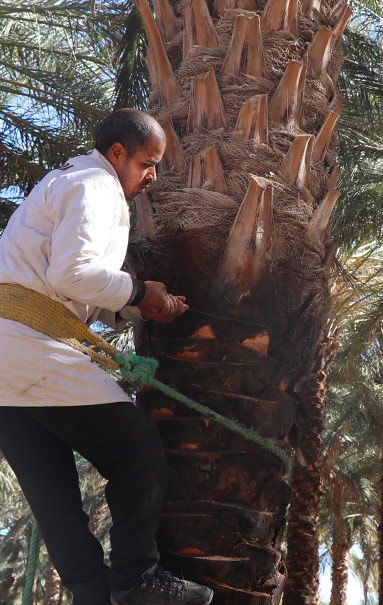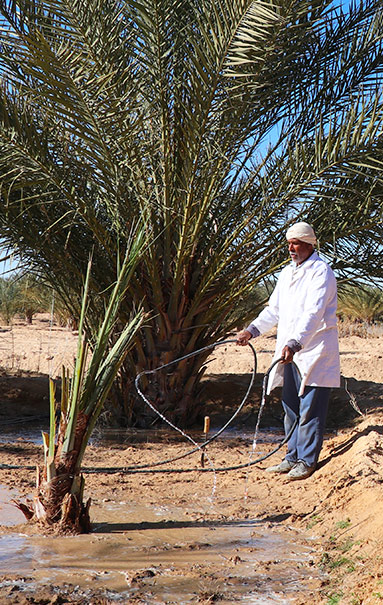THE DATE PALM CULTIVATION AND PRODUCTION

KÉBILI GOVERNORATE DATES SECTOR
Tunisia is renowned for its considerable wealth in genetic resources thus promoting the installation of a very diversified agriculture, this situation is illustrated in the case of date palms, indeed this species which constitutes the main backbone of the oasis agro system. is present in all desert areas and mainly in the governorate of kébili (Nefzaoua) which offers the perfect conditions for the maturation of the Deglet Nour variety.
THE DATE PALM CULTIVATION AND PRODUCTION
Pollination Of Date Palms
The pollination period lasts each year from early April to early May, the man intervenes by taking one to three male spikelets containing pollen and introducing them into the female inflorescence whose spathe has just burst.
Limitation diets Of Female Date Palms
Until the age of 6 years, it is advisable to remove all inflorescences of the young palm tree, as they will cause its growth to slow down. At 8 years old, you can keep 4 diets; at 10 years: 6; at 12 years: 8; at 15 years: 10. A vigorous adult palm can carry 15 to 18 bunches.
Diet Thinning
This operation consists in removing a certain number of fruits or twigs from the bunches, on bunches with long pedicels 1/3 of the twigs are cut in each bunch. The removed spikelets are at the heart of the bunch, that is, they contain the less well-lit fruits.
Inclination of the fruiting stems
The spadix grows rapidly in the first weeks after fertilization. It is soft in texture, its flexibility allows it to bend. When the fruit reaches 3/4 of its final size, help the arch of the stem and install the bunch astride one of the fins located below. In some cases, it is necessary to support the diet with forks. These operations are very important because they avoid scratching the fruit.
Bagging Diets
Bagging is done in August to September with plastic or with a mosquito net to protect the fruits from autumn rains and the date borer.
Date Harvest
The dates are harvested during the fall season. The cutter cuts the spadix and retains the bunch, then it passes from hand to hand to the ground through the intermediary of relay men climbing the stipe at different levels, we can also use the rope to lower the revs. The goal is to bring the fruits to the ground, smoothly, so as not to damage them. The bunches are then grappled, shaken on racks which are transported to a sorting site.
Safety and hygiene measures must be taken in a harvesting site, fruit sorting also must be done on the spot and then dates endup in their specific food crates.
Finally the storage operations are preceded by the Cleaning and maintenance of cold rooms in which the dates are stored.
Ground labour
Usually done in winter after harvest associated with the cleaning and fertilization process.
Fertilization
For development and growth, the date palm needs different nutrients which are provided by organic fertilization (manure, compost) or mineral (fertilizer).
Size And Cleaning
After the date harvest, when the plots are resumed, the dead wood must be removed (stems, spathes, broken palms, etc.)
Each year the lower crown of the date palm dries up, and the entire dry palm must be removed and removed to suppress refuges for pests.
Cleaning, isolation and planting of suckers It is necessary to isolate the young suckers in order to limit competition with the mother plant and destroy centers for insects and diseases.
Date Palm Plantation
The date palm, a dioecious plant comprising male and female subjects, does not reproduce faithfully by seeds but by vegetative means (suckers), because the date palm, in its young age, has the ability to provide suckers which after weaning and planting, become trees with the same physiological characteristics as the mother plant. . It is necessary to envisage a male rejection
giving a male foot or rejection for 50 female feet. The time for planting is in spring and continues until summer.



